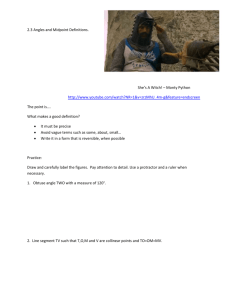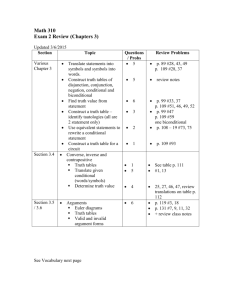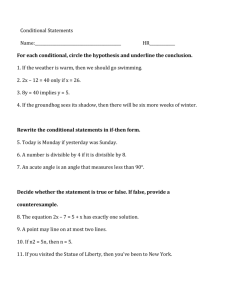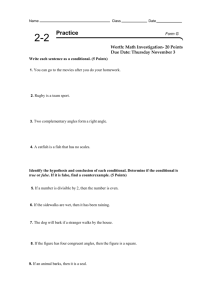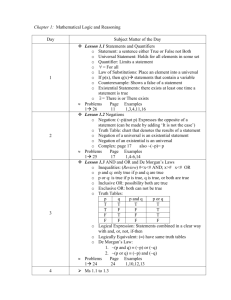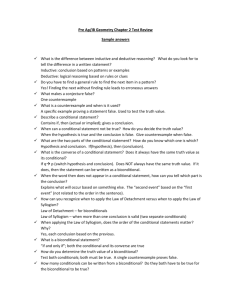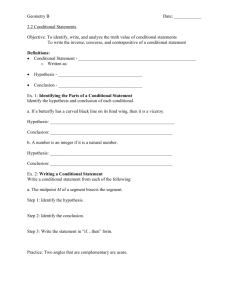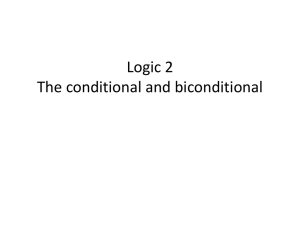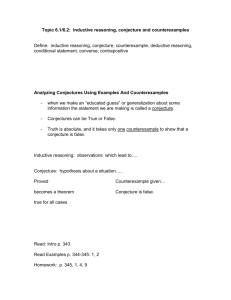Test 1 review
advertisement
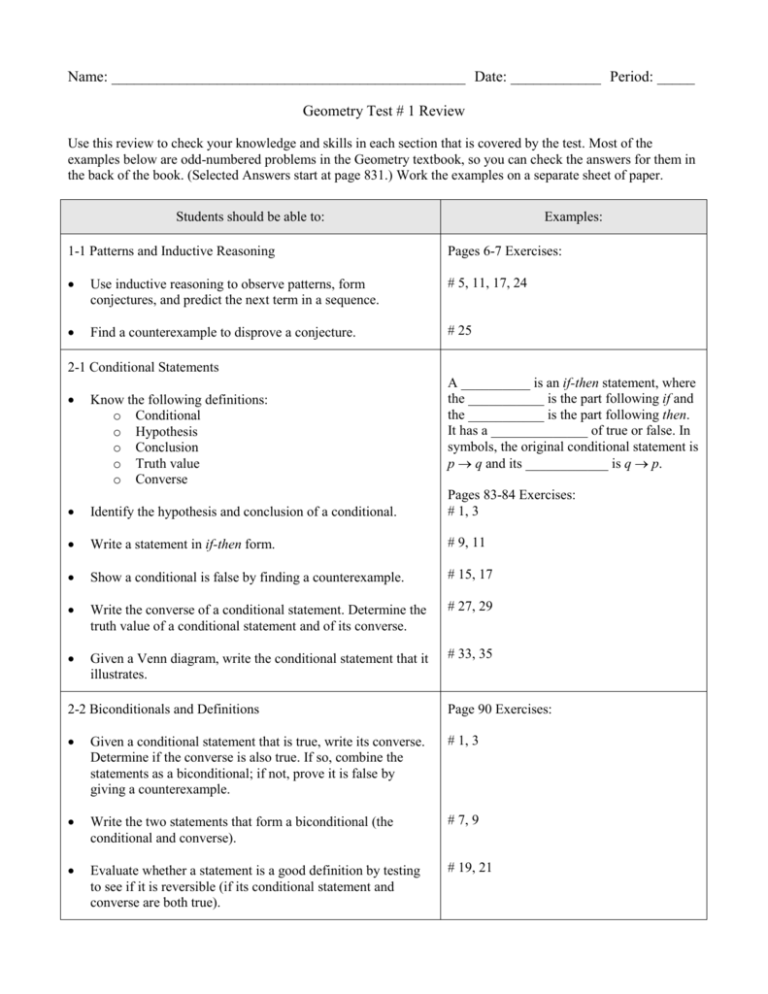
Name: _______________________________________________ Date: ____________ Period: _____ Geometry Test # 1 Review Use this review to check your knowledge and skills in each section that is covered by the test. Most of the examples below are odd-numbered problems in the Geometry textbook, so you can check the answers for them in the back of the book. (Selected Answers start at page 831.) Work the examples on a separate sheet of paper. Students should be able to: Examples: 1-1 Patterns and Inductive Reasoning Pages 6-7 Exercises: Use inductive reasoning to observe patterns, form conjectures, and predict the next term in a sequence. # 5, 11, 17, 24 Find a counterexample to disprove a conjecture. # 25 2-1 Conditional Statements A __________ is an if-then statement, where the ___________ is the part following if and the ___________ is the part following then. It has a ______________ of true or false. In symbols, the original conditional statement is p q and its ____________ is q p. Know the following definitions: o Conditional o Hypothesis o Conclusion o Truth value o Converse Identify the hypothesis and conclusion of a conditional. Pages 83-84 Exercises: # 1, 3 Write a statement in if-then form. # 9, 11 Show a conditional is false by finding a counterexample. # 15, 17 Write the converse of a conditional statement. Determine the truth value of a conditional statement and of its converse. # 27, 29 Given a Venn diagram, write the conditional statement that it illustrates. # 33, 35 2-2 Biconditionals and Definitions Page 90 Exercises: Given a conditional statement that is true, write its converse. Determine if the converse is also true. If so, combine the statements as a biconditional; if not, prove it is false by giving a counterexample. # 1, 3 Write the two statements that form a biconditional (the conditional and converse). # 7, 9 Evaluate whether a statement is a good definition by testing to see if it is reversible (if its conditional statement and converse are both true). # 19, 21 2-3 Deductive Reasoning Page 95: Understand the Law of Detachment. If __________ is a true statement and _____ is true, then _____ is true. Understand the Law of Syllogism. If __________ and __________ are true statements, then __________ is a true statement. Use the Law of Detachment and the Law of Syllogism to draw conclusions (if possible). Pages 96-97 Exercises: # 1, 3, 6, 11, 13, 15 2-4 Reasoning in Algebra Apply the Properties of Equality: o Addition Property o Subtraction Property o Multiplication Property o Division Property o Reflexive Property o Symmetric Property o Transitive Property o Substitution Property Apply the Distributive Property. Apply the Properties of Congruence: o Reflective Property o Symmetric Property o Transitive Property Pages 103-105: If a = b, then _________________________. If a = b, then _________________________. If a = b, then _________________________. If a = b and c 0, then _________________. a = ________________________________. If a = b, then _________________________. If a = b and b = c, then _________________. If a = b, then _____ can replace _____ in any expression. a(b + c) = ___________________________ ____________________________________ ____________________________________ ____________________________________ Justify (give the reason for) each step in solving an equation. Page 105-107 Exercises: # 3, 5, 7, 11, 12 Use given properties to complete statements. # 22, 23 5-4 Inverses, Contrapositives, and Indirect Reasoning Pages 280-281: Know the following definitions: o Negation o Inverse o Contrapositive Conditional: If p, then q. Negation: ____________________________ Inverse: _____________________________ Contrapositive: _______________________ Write the negation of a statement. Write the inverse and the contrapositive of a conditional statement. Page 283 Exercises: # 1, 3 # 7, 9 Review of Algebra I Add, subtract, multiply, and divide numbers without a calculator. Simplify expressions with fractions, exponents, square roots, etc. Solve one-variable equations.
